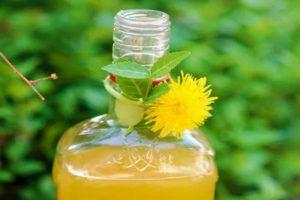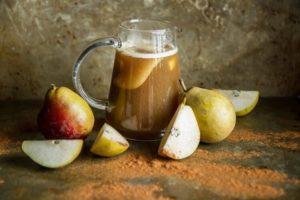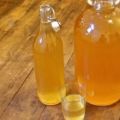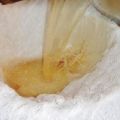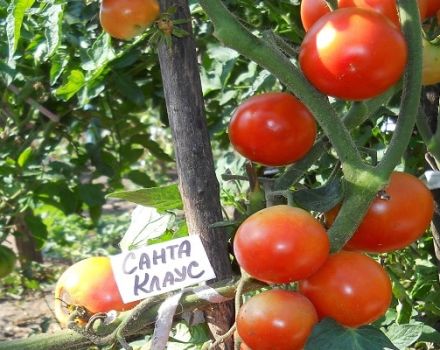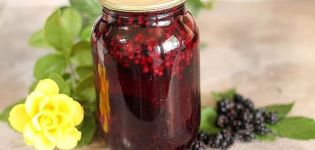The best ways to fix homemade wine if it turns out sour
Wine is considered a noble, refined drink with a refined taste, sweet and sour notes. To obtain a high-quality product, you must have special skills and experience. Novice winemakers often face the problem of increased acidity of the drink. Winemakers are interested in how to fix homemade wine if it turns out sour.
Why is wine sour after fermentation
Wine contains the following types of acids:
- apple;
- vinegar;
- amber;
- lemon;
- wine;
- dairy;
- galacturonic;
- glycolic;
- pyruvic;
- dioxyfumaric;
- oxalic.
The low content of calories in sour grape wine allows you to maintain your figure, restore the water-salt balance, and increase cholesterol levels.
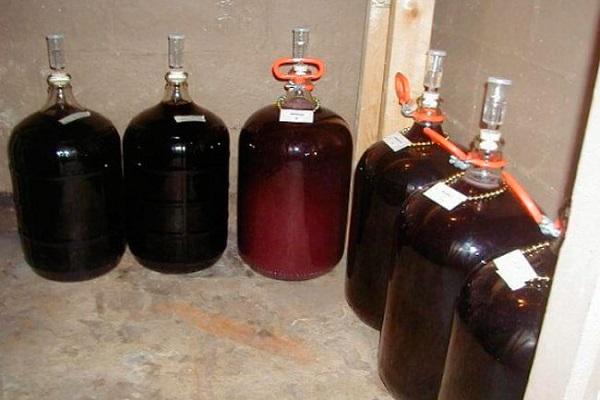
During fermentation in grapes, Drosophila flies multiply, they are carriers of acetic acid bacteria. Under favorable conditions, bacteria multiply, breaking down the alcohol in the drink, leaving only water and vinegar.
The acidity increases in wine due to:
- unripe raw materials;
- sour grapes;
- insufficient amount of granulated sugar;
- poor sterilization, container sealing.
The quality of wine depends on acidity, sugar level and strength. The acceptable norm is 5-10 g of acid per 1 liter of drink. The increase in performance contributes to the oxidation of wine. Sour apple / grape wine is healthier than other types of drink - it does not contain a high concentration of sucrose, glucose.

How to check the acidity of a drink
Winemakers believe that quality grape wine should have a sufficient acidity level not exceeding sweetness. To determine acidity, you need to stock up:
- pipette 5-10 ml;
- burette - glass tube with a tap;
- mug;
- glass rod;
- titration liquid (sodium solution with distilled water);
- litmus test.
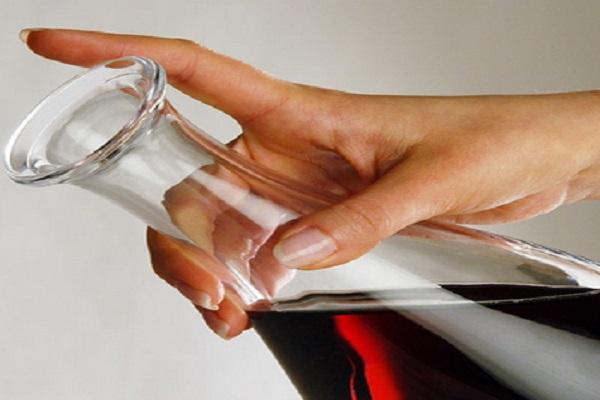
Determination of the acidity of wine must:
- The burette is filled with titration liquid and air is released.
- Distilled water can reduce the bright color of the juice. Juice (8-10 ml) is taken with a pipette, poured into a mug.
- The container with the liquid is placed under the burette, 1 ml of alkaline liquid is dripped.
- The mixture is stirred with a glass rod, juice is dripped onto a litmus strip. A red strip indicates insufficient acid neutralization.
- Add 1 ml of alkali to the mug, use litmus paper. The procedure is carried out until the strip turns blue, this will mean mixing acid with alkalis.
The amount of ml of alkaline solution used for 25 ml of juice will correlate with the acidity of the juice in g / l.
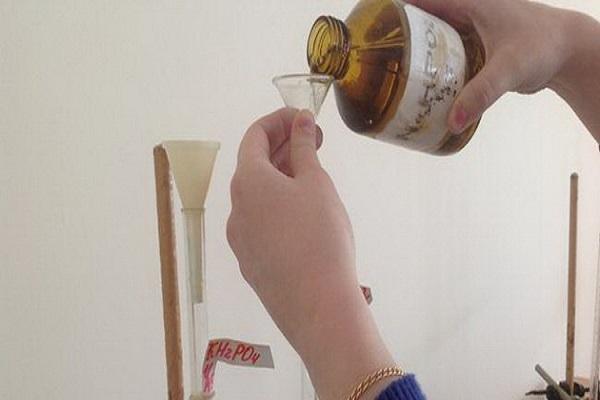
How to fix sour wine at home
Unsuitable beverage parameters are corrected before fermentation begins. In cold, rainy summers, the berries do not acquire enough sucrose. In this case, this is compensated by adding more sugar.
Dilution with water
The acid can be removed by dilution with water, but this contributes to a decrease in extractability, a partial loss of taste. Water reduces the acid level of grape raw materials by 2 times, while it is necessary to monitor the amount of added sugar.
It is necessary to reduce acidity with water before fermentation. When diluting the finished drink before drinking, discomfort and headache arise.

Pasteurization
A sour drink can be corrected by pasteurization. Heating the drink kills the yeasts in the grapes, which increase the acidity. After that, the liquid is sweetened; with the addition of granulated sugar, the fermentation processes do not occur again.
The pasteurization process takes place in stages:
- Bottles with wine are placed in a wide basin on a stand - they should not touch the bottom.
- Cold water is poured into the basin, placed on the stove.
- Over low heat, water is heated to 65-75 aboutFROM.
- The basin is removed from the heat, left to cool.
- The bottles are taken out, tightly sealed, and stored.
Through pasteurization, acid levels can be neutralized and the aroma and flavor of the grapes preserved.
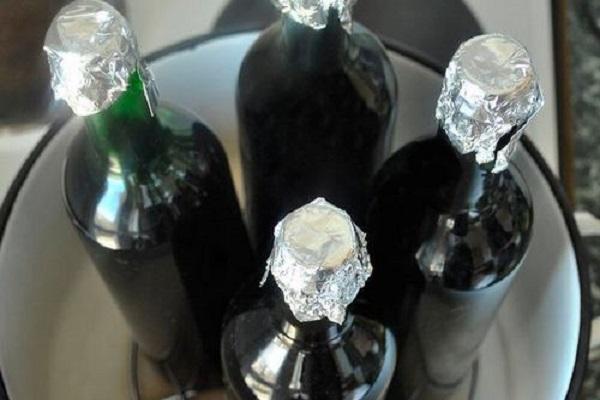
Cryostabilization, or cooling
The acid can be lowered by cryostabilization. The drink is cooled for 14-21 days at + 4-0 aboutC. If the wine remains sour, it is kept in the cold for another 20 days.
Stabilization by low temperatures helps to acidify the wine, promotes the formation of a solid sediment. The drink is drained from the sediment, filtered, poured into sterile bottles, and hermetically sealed.
Sulfide addition
Reducing the acid level of the drink at home can be done with sulfitation. Experienced winemakers resort to sulfur processing, preparing an alcoholic grape drink in large quantities.
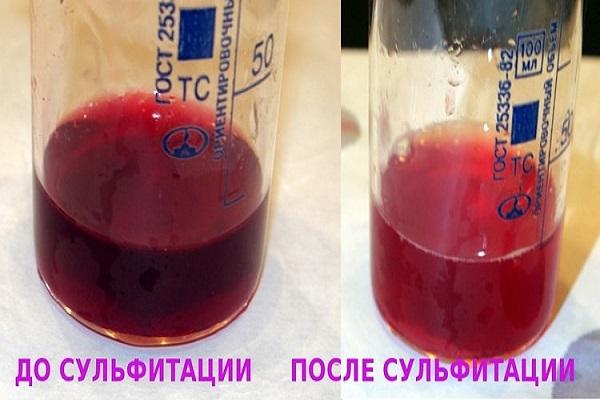
Sulfur dioxide has a pronounced antiseptic, antioxidant effect. It acts as a stabilizer and is widely used in winemaking.
Sulfitation is carried out at the initial stages of preparing the drink:
- Sulfur wicks are used to fumigate barrels / bottles, they are burned until the end of combustion. After they go out, all the oxygen will evaporate from the container and kill the bacteria.
- Modern sulfitation involves adding powdered sulfur to the drink.
- Wine is mixed with pyrosulfite / potassium metabisulfite in proportions of 100 mg / l of liquid. The powder is diluted with wine or water, stirred, poured into a common bottle. When wine is mixed with pyrosulfite, sulfur oxide is formed - it reacts to acid, lowers its level.
Subject to the proportions, you can make the wine sweet, without excessive sourness, bitterness. Sulphitation does not impair the taste and aroma of the wine. Using chemicals in drinks, they are diluted strictly according to the instructions. An overdose gives the drink an unpleasant sulphurous odor and harms the human body.
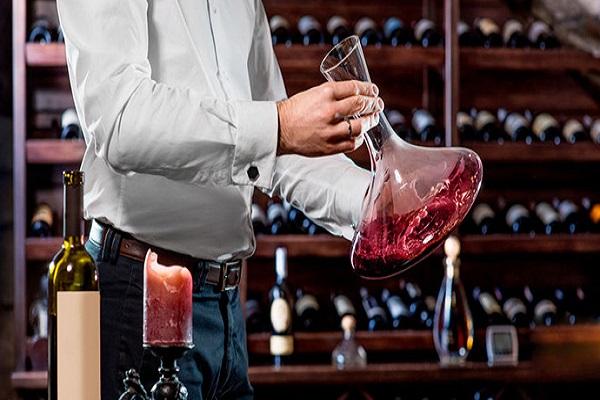
Wine fixing
Raise the degree of wine to 20-22 aboutC can be used with fasteners. A similar result is not achieved by a single fermentation process.
When attaching drinks, you must follow the rules:
- When the alcohol reaches 13-14 aboutC, the drink stops fermenting. To fix the wine, you need to add sugar, alcohol, vodka. You can fix the drink at any stage. Alcohol is mixed with berry juice, fermented young wine at the end of cooking.
- Fermenting grape pulp does not need to be squeezed out during alcoholization. Mash the berries, stir with sugar syrup. Wine in bottles is placed in heat so that it ferments.The duration of the process is 4-5 days, during which time the sugar content decreases by 8-10%. After that, the pulp is squeezed out, the juice is mixed with 9% alcohol.
- The wine is infused for a week, poured into a container. It is important not to overdo it with alcohol. You can increase the degree by 1% with alcohol in a ratio of 1% of the amount of wine drink. Vodka is added twice as much - 2% per 1% wine. For example, to fix 10 liters of a drink at 6%, it is mixed with 600 ml of alcohol or 1.2 liters of vodka.
You can sweeten the wine to neutralize acidity. By adding 20 g of sugar to 1 liter of pulp, you can increase the degree by 1%. Winemakers recommend not to overdo it with sugar - this will stop / slow down the fermentation process.
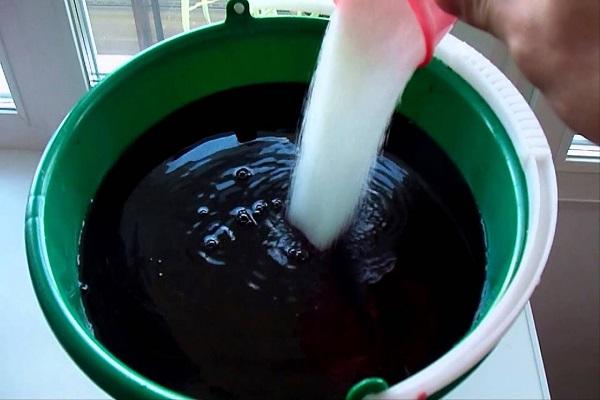
Blending
The essence of blending is mixing sour juice with sweet in equal proportions to balance the taste and acid. It is important to consider the following nuances:
- For mixing, it is recommended to use the juice of the same fruit / berry, but of a different variety. The fruits should be of the same color - blue grapes with blue, green apples with green ones.
- When using different fruits, the taste of the preparation deteriorates.
- Reducing acidity with juice is the best option. This way the bright gustatory palette and the richness of the aroma are preserved.
The disadvantage of blending is the presence of dessert wine with an increased sugar concentration. Experienced winemakers with different wine varieties resort to this method.
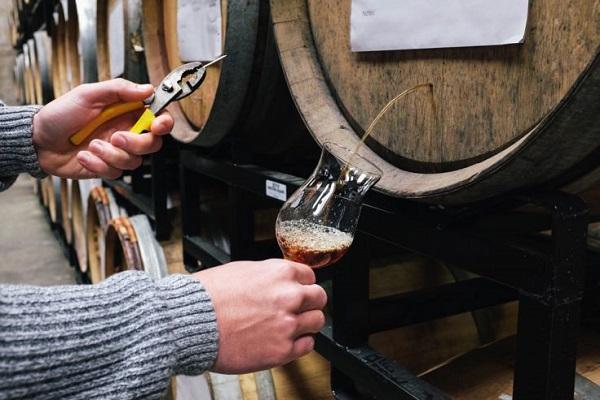
How to prevent the problem from occurring
You can avoid problems when making wine by following these rules:
- Granulated sugar must be placed in accordance with the recipe. Insufficient amount of granulated sugar is fraught with taste disturbance, especially when using sour / slightly sweet berries.
- A bottle of wine is covered with a water seal or a rubber glove. This will help determine the end of the fermentation process. It is important to close the container hermetically - if oxygen enters, the drink deteriorates.
- When choosing berries, it is recommended to give preference to sweet, aromatic specimens.
- It is necessary to monitor the fermentation of the workpiece - when this process is delayed, the wine begins to oxidize.
Sour wine will become sparkling with added sugar. It is tightly corked, placed for long-term storage.

What to do with wine if the taste cannot be corrected
You shouldn't get rid of sour, tainted wine. It can be used in other ways:
- The acidic liquid is suitable for wine vinegar. Grape pulp (1 l) is mixed with sugar (20-25 g), left to infuse for 14 days. Fermented vinegar is poured into a bottle, corked, sent to the cellar / refrigerator.
- The sour drink is used for culinary purposes. It is suitable for making a sauce, fish and meat are marinated with it. The acid helps to soften the meat fibers, gives the product tenderness and juiciness.
- Fermented wine is mixed with other alcoholic beverages. A popular option is sangria - it is prepared with sour wine, lemonade, spices, and fruits.
If the problem is detected early, the acid in the wine can be neutralized at the initial stage. To obtain a quality product, winemakers use ripe, juicy, sugary fruits. If wine remains sour, it is used as a sauce, vinegar, additive to other alcoholic beverages.
